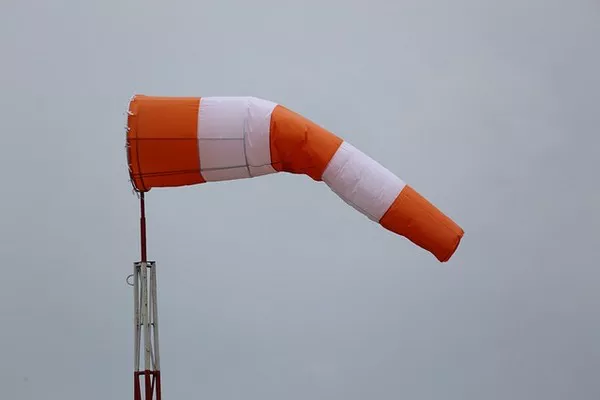Anemometers play a pivotal role in maritime operations, particularly aboard ships where weather conditions can swiftly impact navigation and safety. These instruments, designed to measure wind speed and sometimes direction, are indispensable for assessing environmental conditions and making informed decisions at sea.
The Basics of Anemometers
At its core, an anemometer is a device that detects and records the speed of the wind. On ships, this information is vital for various reasons, including route planning, fuel efficiency, and overall safety. Modern anemometers utilize advanced technology to provide accurate and real-time data, ensuring that captains and navigators can navigate through changing weather conditions with confidence.
Types of Anemometers
Several types of anemometers are used on ships, each with its own method of measuring wind speed:
Cup Anemometers: Perhaps the most recognizable type, cup anemometers consist of three or more cups mounted on horizontal arms. As the wind blows, these cups rotate, and the speed of rotation is directly proportional to the wind speed.
Vane Anemometers: These instruments not only measure wind speed but also determine wind direction. A vane anemometer typically features a small weather vane that aligns itself with the wind direction, coupled with sensors that calculate wind speed.
Ultrasonic Anemometers: Increasingly common in modern maritime applications, ultrasonic anemometers use ultrasonic pulses to measure wind speed. They are highly accurate and require minimal maintenance, making them suitable for marine environments.
Pitot Tube Anemometers: Originally developed for aviation, pitot tube anemometers can also be adapted for maritime use. They measure wind speed based on the pressure difference between a forward-facing tube (pointing into the wind) and a side-facing tube (parallel to the wind).
Integration into Ship Systems
Anemometers on ships are typically integrated into broader meteorological and navigational systems. This integration allows for continuous monitoring of wind conditions alongside other critical parameters such as sea state, temperature, and humidity. The data collected from anemometers is relayed to onboard computers and navigation displays, providing real-time updates to the crew.
Navigational Impact
The primary purpose of anemometers aboard ships is to enhance navigational safety. Accurate wind speed measurements enable captains to anticipate weather changes, adjust course as necessary, and maintain optimal speed for fuel efficiency and stability. For instance, strong winds can significantly affect a ship’s handling and stability, necessitating proactive measures by the crew.
Safety Considerations
In adverse weather conditions, the role of the anemometer becomes even more crucial. High wind speeds can pose risks such as increased wave heights and reduced maneuverability. Anemometers help mitigate these risks by providing timely data for informed decision-making, such as altering course to avoid the worst of the weather or adjusting the ship’s speed to minimize the impact of rough seas.
Historical Development
The history of anemometers dates back centuries, evolving from simple mechanical devices to sophisticated electronic instruments. Early maritime anemometers were often basic cup or vane designs, offering limited accuracy compared to today’s digital counterparts. Advances in sensor technology and materials have improved reliability and durability, crucial for withstanding the harsh marine environment.
Challenges at Sea
Operating anemometers at sea presents unique challenges, primarily due to exposure to saltwater, strong winds, and corrosive conditions. Modern marine-grade anemometers are designed to withstand these challenges, often featuring robust materials such as stainless steel and advanced coatings to prevent corrosion. Regular maintenance and calibration are essential to ensure accurate readings throughout a ship’s operational life.
Technological Advancements
Recent years have seen significant advancements in anemometer technology, driven by innovations in sensor miniaturization, wireless communication, and data processing. These advancements have enabled more compact, reliable, and energy-efficient anemometers suitable for deployment on various types of vessels, from small yachts to large cargo ships.
Regulatory Requirements
Anemometers on ships are subject to regulatory standards set by organizations such as the International Maritime Organization (IMO) and national maritime authorities. These standards ensure that anemometers meet minimum performance criteria and are regularly calibrated to maintain accuracy. Compliance with these regulations is essential for ensuring the safety of maritime operations worldwide.
Training and Familiarization
Effective use of anemometer data requires training and familiarization among ship crews. Navigators and officers must understand how to interpret wind speed readings in the context of prevailing weather conditions and operational requirements. Training programs often include simulations and practical exercises to simulate real-world scenarios, preparing crews to respond effectively to changing weather conditions.
Future Prospects
Looking ahead, the future of anemometers in maritime applications appears promising. Continued advancements in sensor technology and data analytics are expected to further enhance the accuracy and reliability of wind speed measurements. Integration with artificial intelligence (AI) and predictive modeling could enable ships to anticipate weather patterns more accurately, optimizing route planning and fuel consumption.
See Also How Does A Weather Barometer Work
Conclusion
In conclusion, anemometers are indispensable tools aboard ships, providing critical data on wind speed and direction that directly impact navigational safety and efficiency. From traditional cup and vane designs to modern ultrasonic sensors, these instruments have evolved significantly, driven by advancements in technology and regulatory requirements. As maritime operations continue to expand globally, the role of anemometers in ensuring safe and efficient navigation will only become more pronounced, highlighting their importance in modern shipping practices.
Related Topics

